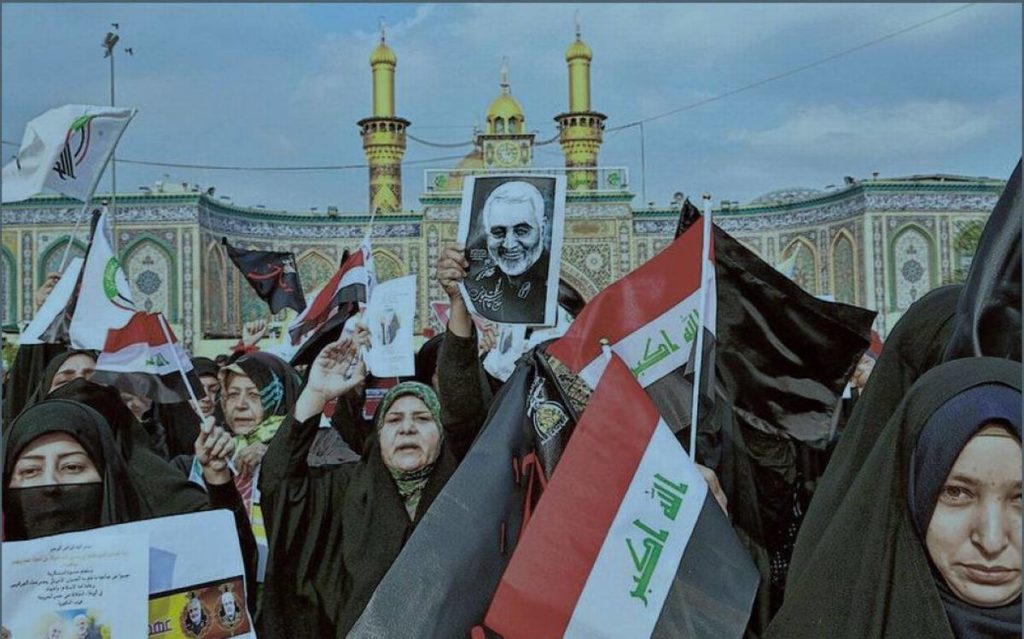China’s Response to the Killing of Soleimani

By Roie Yellinek
The January 3 US drone strike that killed Quds Force commander Qassem Soleimani, deputy commander of the Popular Recruiting Forces (al-Hashd ash-Sh’abi) Abu Mahdi al-Mohandes, and at least six other people took place just a few days after a joint maritime maneuver held by China, Russia, and Iran. This maneuver, ostensibly designed to train the forces of the three countries to work together, had another important role: to display that trilateral cooperation to the international arena. Yet despite that intention, a spokesman for the Chinese Ministry of Defense was careful to emphasize that the maneuver had “no connection with the regional situation”.
After the killing of Soleimani, the spokesman for the Chinese FM said, “We urge the parties involved, especially the US, to keep calm and restraint to avoid further escalation”. During a conversation between Chinese FM Wang Yi and his Iranian counterpart Muhammad Javad Zarif a day after the killing, Wang Yi said Beijing would continue to play a “constructive role in the region” and called the US action “unacceptable”.
While the Chinese were cautious in their language as they called for calm, their Russian and Iranian counterparts used harsher words, openly condemning and denouncing the US strike.
The difference in response raises the question of what the Chinese want to achieve in their relations with Iran.
Chinese policy in the Middle East generally seeks to minimize disagreements and maximize stability, with the aim of supporting Chinese initiatives and a quiet economic arena that will encourage growth. Iran has a major role to play in the Belt and Road Initiative, the signature policy of Chinese president Xi Jinping. That role is mainly a product of its strategic location, which allows for the construction of a physical connection between China and other Middle East countries and from there to Africa and Europe. Another critical element of great interest to China is the Hormuz Strait at the tip of the Persian Gulf, through which about one-fifth of the world’s oil moves daily.
Beyond economic considerations, instability in the Middle East can have a direct impact on China, as the escalation of conflict in that region can attract activists from among the Uighur minority. Members of this minority, who live under the authority of China’s central government, have found their way to the front in Syria and Afghanistan. The problem of Uighur activists fighting abroad and then returning to China deeply concerns Beijing because of the fighting experience they acquire and the ideology they absorb.
The Chinese response to the Soleimani killing indicates that the talk of a US withdrawal from the Middle East, and its replacement by Chinese and possibly other forces, is premature. The Chinese do not (yet) have the power to restrain Iranian ambitions in the Middle East or anywhere else. If they did, they would likely act to prevent escalation, as calm is in their interest. A China with significant influence over Iran would likely have prevented it from taking such steps as, for example, attacking the Saudi oil fields.
But there is another possible explanation for Beijing’s diffidence. China could be staying in the background because it understands that right now, it is in its interest that Tehran attract global attention in general and American attention in particular. From Beijing’s perspective, it is all to the good that US attention be diverted away from the trade battle with China, which is considered by many to be the greatest threat to global economic growth in 2020. It is also probable that Beijing is pleased with the diverting of American attention away from its moves in the South China Sea.
For multiple reasons, the Chinese are working consistently to prevent escalation and minimize their exposure to the many challenges that proliferate in the Middle East region.
(Roie Yellinek is a Ph.D student at Bar-Ilan University, a doctoral researcher at the Begin-Sadat Center for Strategic Studies, and a non-resident scholar at the Middle East Institute.)
The article was published by the BESA Center and can be accessed here.